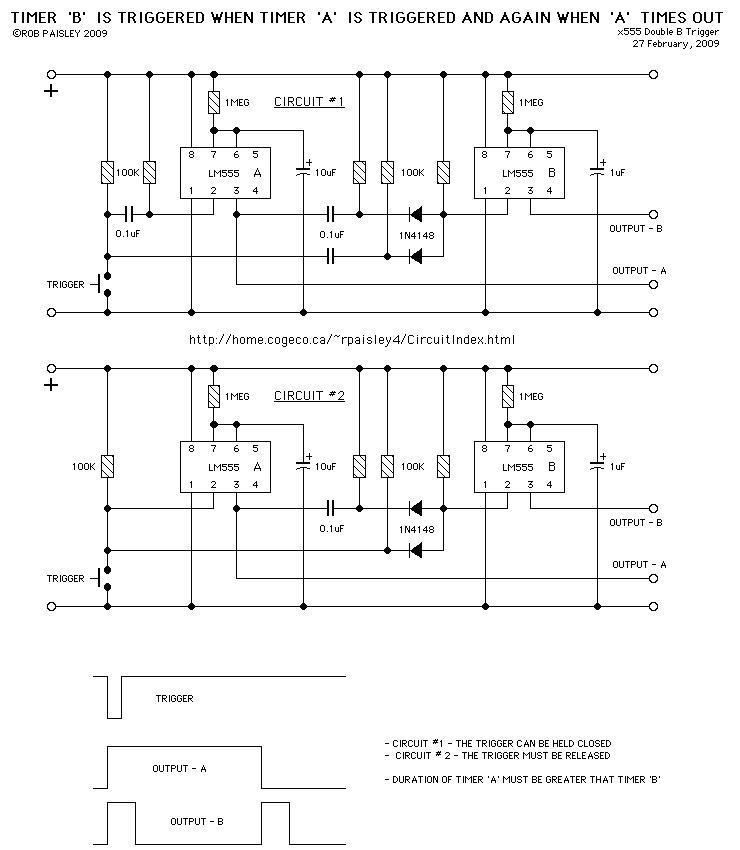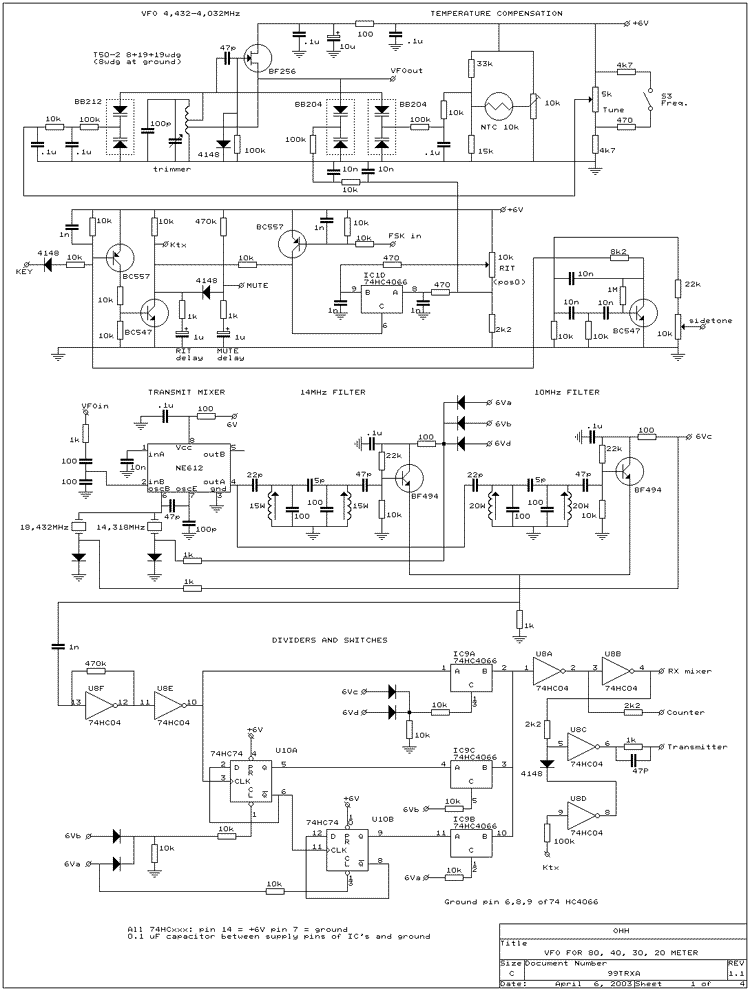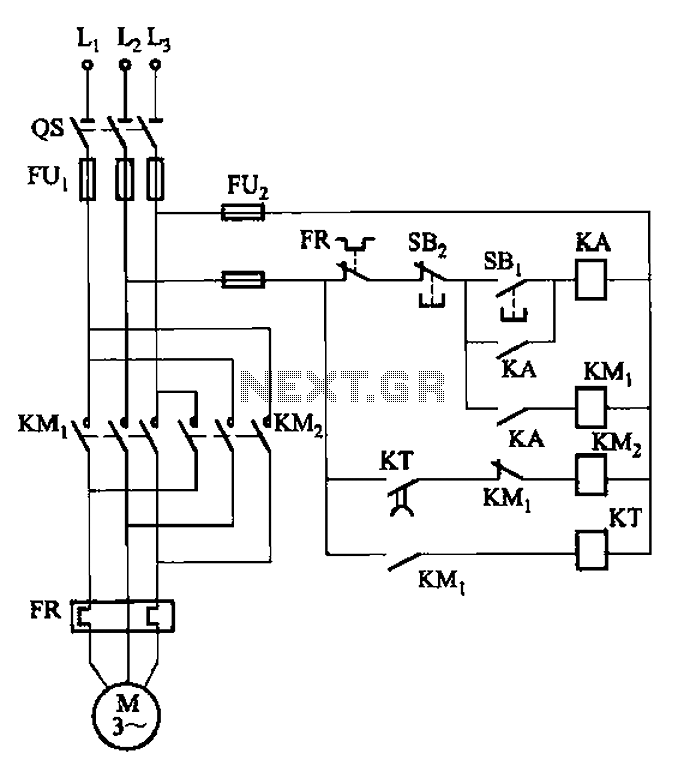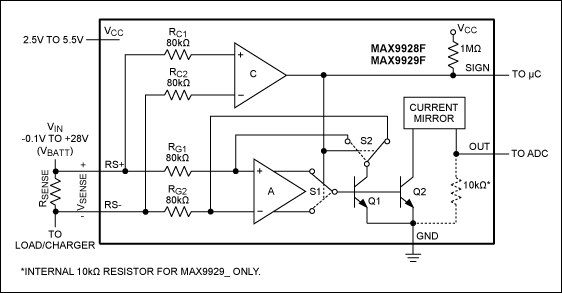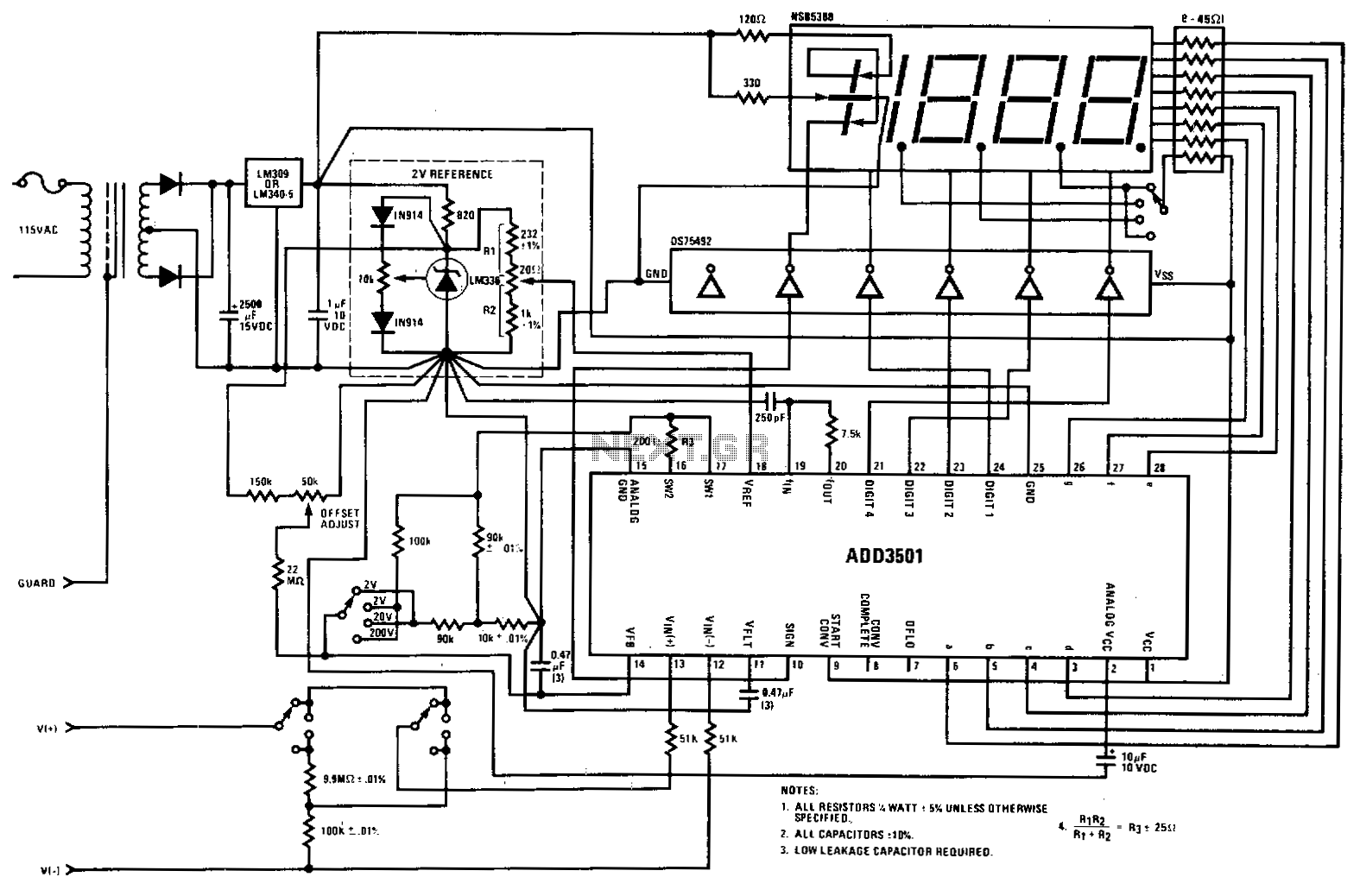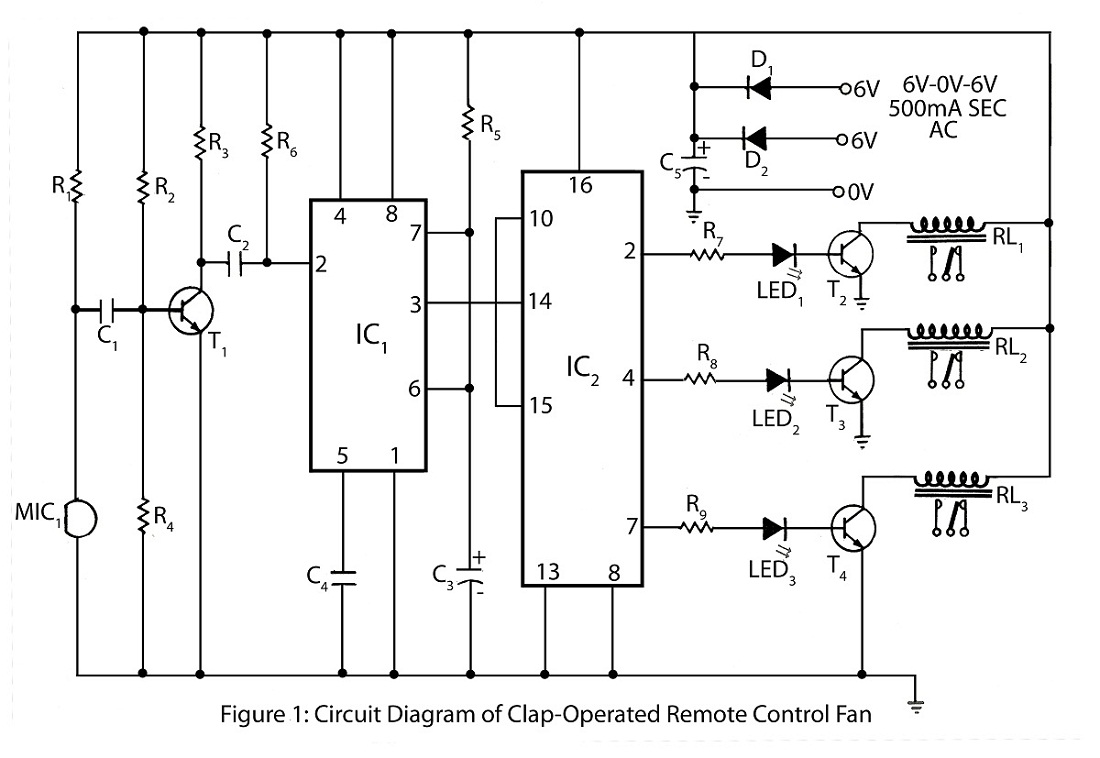
Four reverse brake circuits to operate energy
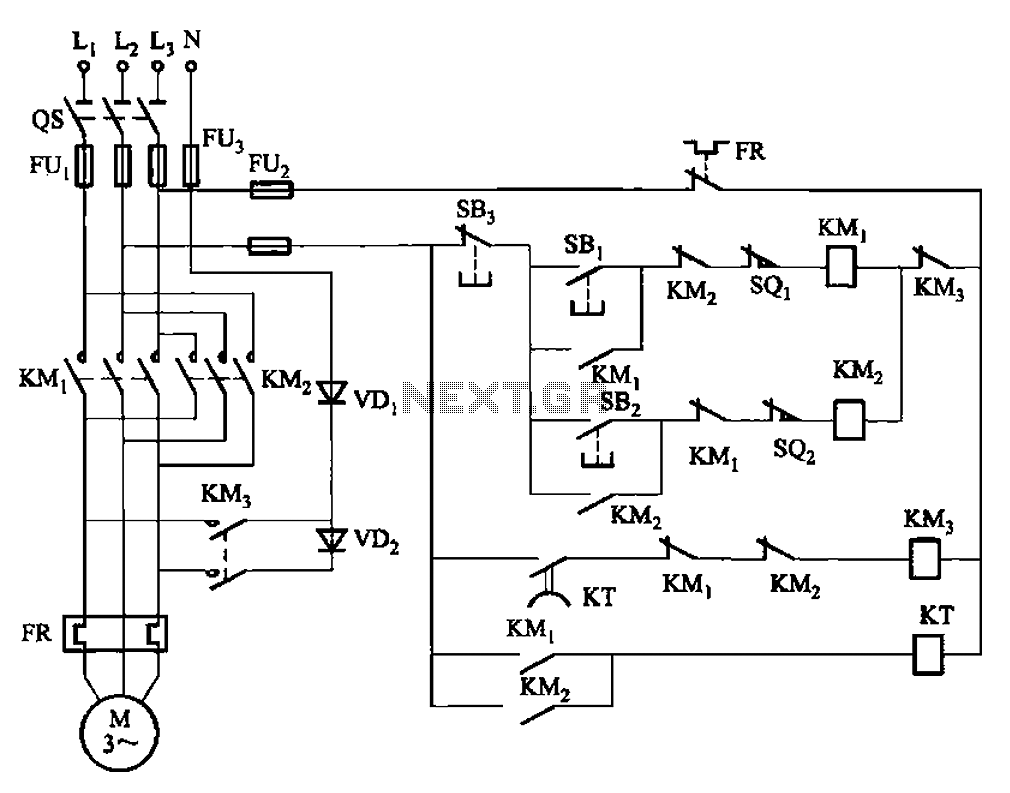
The circuit depicted in Figure 3-147 utilizes a time relay (KT) adjustable between 1 to 2 seconds to ensure adequate braking time. The relay addresses instances where the actual brake stop time may be insufficient. Additionally, SQ1 and SQ2 serve as terminal switches for forward and reverse operations, respectively.
The circuit employs a time relay (KT) that plays a critical role in managing the braking process. By adjusting the relay's timing from 1 to 2 seconds, it can accommodate various operational conditions, ensuring that the braking action is neither too abrupt nor too prolonged. This adjustment is vital for applications where precision in stopping is necessary to prevent mechanical stress or damage to the system.
The forward and reverse operation terminal switches, SQ1 and SQ2, are integral to controlling the direction of motion in the system. These limit switches are activated when the mechanism reaches its respective end positions, ensuring that the motor does not exceed its designated operational range. This feature is crucial in automated systems where precise control of movement is required for safety and efficiency.
Incorporating these components into the circuit design enhances the overall reliability and performance of the braking system. The combination of the time relay and limit switches allows for a well-coordinated operation that minimizes the risk of mechanical failure and enhances user safety. The circuit's layout should be carefully designed to ensure that all connections are secure and that the relay and switches are positioned for optimal functionality within the broader system. Circuit shown in Figure 3-147. To allow sufficient braking time, using the time relay KT (1 ~ 2s, adjustable), the real on the occasion of a brake stop time may be short. Figur e, SQi, SQ2 respectively forward and reverse operation terminal (limit) switches.
The circuit employs a time relay (KT) that plays a critical role in managing the braking process. By adjusting the relay's timing from 1 to 2 seconds, it can accommodate various operational conditions, ensuring that the braking action is neither too abrupt nor too prolonged. This adjustment is vital for applications where precision in stopping is necessary to prevent mechanical stress or damage to the system.
The forward and reverse operation terminal switches, SQ1 and SQ2, are integral to controlling the direction of motion in the system. These limit switches are activated when the mechanism reaches its respective end positions, ensuring that the motor does not exceed its designated operational range. This feature is crucial in automated systems where precise control of movement is required for safety and efficiency.
Incorporating these components into the circuit design enhances the overall reliability and performance of the braking system. The combination of the time relay and limit switches allows for a well-coordinated operation that minimizes the risk of mechanical failure and enhances user safety. The circuit's layout should be carefully designed to ensure that all connections are secure and that the relay and switches are positioned for optimal functionality within the broader system. Circuit shown in Figure 3-147. To allow sufficient braking time, using the time relay KT (1 ~ 2s, adjustable), the real on the occasion of a brake stop time may be short. Figur e, SQi, SQ2 respectively forward and reverse operation terminal (limit) switches.
